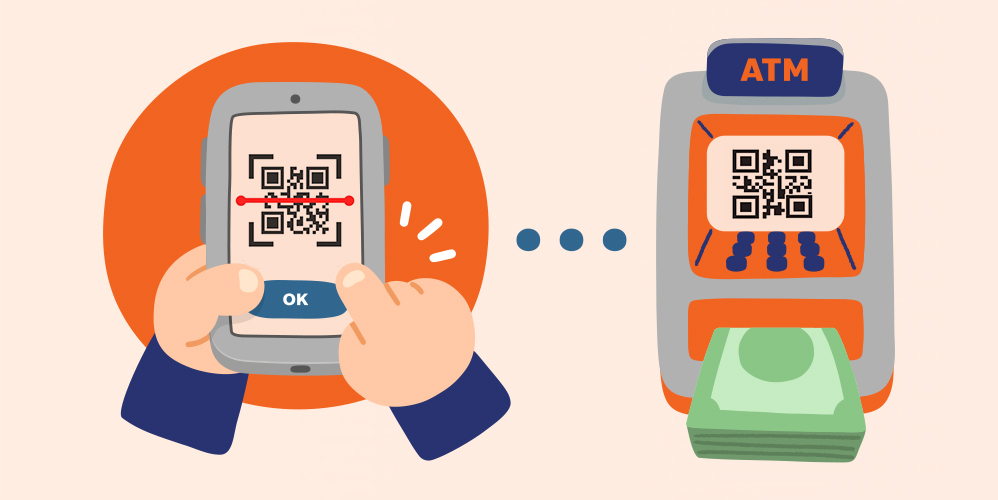
How will RBI's Digital Rupee Work & How is it Different
06 Mar 2023

Table of Content
With the pilot launch of Central Bank Digital Currency, India has taken a significant step towards digitising its financial ecosystem. Central Bank Digital Currency (CBDC) is the electronic version of the nation’s official currency and is issued by respective country's central bank. In India, the RBI (Reserve Bank of India) will issue this legal tender, also known as the digital rupee .
A number of reputable banks, including Bank of Baroda, have been entrusted by the RBI to work on this pilot project, which aims to research and analyse CBDC’s impact on the economy, risks, benefits, and implementation methods.
Why does India need a Cash Alternative?
To understand its impact better, let us try to understand what digital currency brings to the table.
- CBDC can be programmable, i.e., it can be created and circulated for specific purposes. CBDC can be created for specific contracts, persons or periods. For instance, government funds can be misused or embezzled when in cash form. But with CBDC, the government and even private players can ensure that money earmarked for a specific purpose is used for that purpose only.
- resently, cryptocurrency offers a secure and real-time money transfer option. However, as it is unregulated, most governments do not encourage cryptocurrency. While CBDC is not an alternative to cryptocurrency, it will help RBI provide similar benefits in a legal and secure manner.
- Digital payment platforms are mostly private entities. With CBDC, the government can strengthen its presence in digital payments. An RBI-backed digital currency will encourage more people to accept digital payments in India.
- It costs money to create money. Apart from the minting cost, currency notes also need to be stored, transported, and delivered to various locations across the country. Digital currency will ease the burden on India's massive money-making exercise since it is completely digital.
Let's Now Understand How Digital Currency in India will Impact Its Economy:
Disrupting the Money Transfer Service Industry
Domestic and international money transfers are subject to specific turnaround times, batch runs, bank holidays, weekends, etc. However, digital currency transactions will run at a high speed, 24/7, and transaction-related expenses is expected to be lower than the prevailing costs. With international currency compatibilities in place, digital currency in India may disrupt the money transfer service industry worldwide.
Achieving Cashless Economy
The anonymity of physical cash is attractive to many people and cannot be replaced entirely anytime soon. But with an increase in financial inclusion through the e-Rupee, India should see a greater acceptance of a cashless payment ecosystem. In this manner, digital currency, or e-Rupee, will help the government achieve a cashless economy.
For the people, a cashless economy means the convenience of digital transactions and freedom from the risk of carrying and storing cash.
Better Implementation of Government Schemes
CBDC can help with Direct Beneficiary Transfer that is earmarked for special purposes. CBDC can be programmed for specific purposes and periods. For example, a certain amount of digital currency meant for a Mahatma Gandhi National Rural Employment Guarantee Act (MGNREGA) beneficiary can only be received and used by such a person.
Similarly, LPG (cooking gas) grants will be accepted for payment in designated places only. This means that if you receive an LPG grant in CBDC from the government, you can use it only to digitally pay an authorised LPG agency and for nothing else.
It signifies how CBDC can have a massive role in the last-mile and grassroots implementation of government schemes , policies, and aids.
Impact On and Benefit for The Citizens
Some of the most obvious ways in which CBDC will impact common people include,
- Efficient money transfers and faster settlements
- The transaction cost is likely to be lower, saving money for users. This will also hold for international money transfers as CBDC-based remittances will be quicker and cheaper
- Lesser downtime is expected in CBDC, with 24X7 availability of transfer and remittance services
- Carrying and storage of physical cash, as well as the problem of soiled and damaged notes, can be avoided.
In Conclusion
Once it is embedded in India’s monetary system, the digital rupee's impact can be expected to sweep across the Indian economy. CBDC benefits like reduced physical cash usage, better transaction speed, and digital efficiency are widely anticipated to drive this impact. With successful implementation, CBDC will have far-reaching and positive effects on the economy and fuel India's financial growth.
Popular Articles
Tag Clouds
Related Articles

The Future of Green Hydrogen: How Bank of Baroda’s Green Hydrogen Financing Scheme is Leading the Way


Increased Interest Rates for Senior Citizen Savings Schemes, KVP, NSC & Post Office Time Deposits







-
Disclaimer
The contents of this article/infographic/picture/video are meant solely for information purposes and do not necessarily reflect the views of Bank of Baroda. The contents are generic in nature and for informational purposes only. It is not a substitute for specific advice in your own circumstances. Bank of Baroda and/ or its Affiliates and its subsidiaries make no representation as to the accuracy; completeness or reliability of any information contained herein or otherwise provided and hereby disclaim any liability with regard to the same. The information is subject to updation, completion, revision, verification and amendment and the same may change materially. The information is not intended for distribution or use by any person in any jurisdiction where such distribution or use would be contrary to law or regulation or would subject Bank of Baroda or its affiliates to any licensing or registration requirements. Bank of Baroda shall not be responsible for any direct/indirect loss or liability incurred by the reader for taking any financial decisions based on the contents and information mentioned. Please consult your financial advisor before making any financial decision.
Increased Interest Rates for Senior Citizen Savings Schemes, KVP, NSC & Post Office Time Deposits
Various small savings schemes have had their interest rates increased by the Indian government in an announcement, including the National Savings Certificate (NSC), Senior Citizen Savings Scheme (SCSS), Post Office Time Deposit Schemes (POTD), Post Office Monthly Income Scheme (POMIS), and Kisan Vikas Patra (KVP). This move is aimed at providing better returns to small investors and promoting savings culture in the country. Let's take a closer look at the new interest rates of each of these government schemes , which are applicable from January 1, 2023.
Home Loans Process To Go Paperless Soon
In a rapidly digitizing world, it's no surprise that even our home loan process is going paperless. With the new "digital home loan" process, you will soon be able to apply for and receive a home loan without having to step into a bank. This new process is still in its early stages, but it has already begun to revolutionize the way we think about and apply for home loans. In this blog post, we will explore the paperless home loan process and how it can benefit you.

